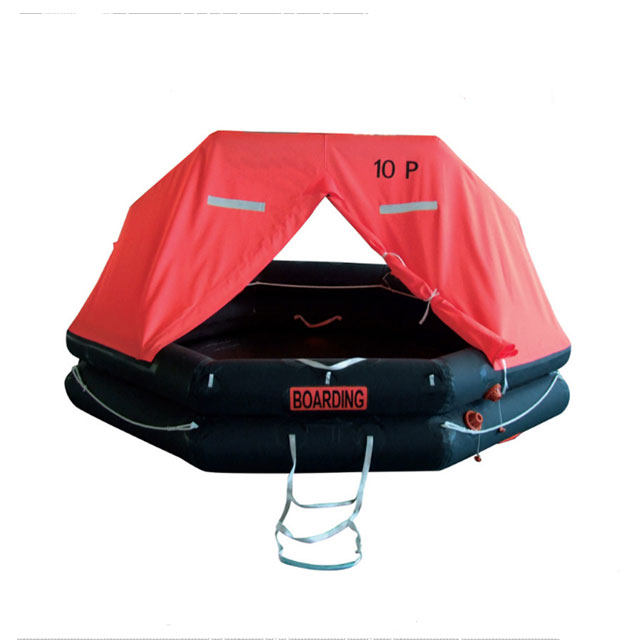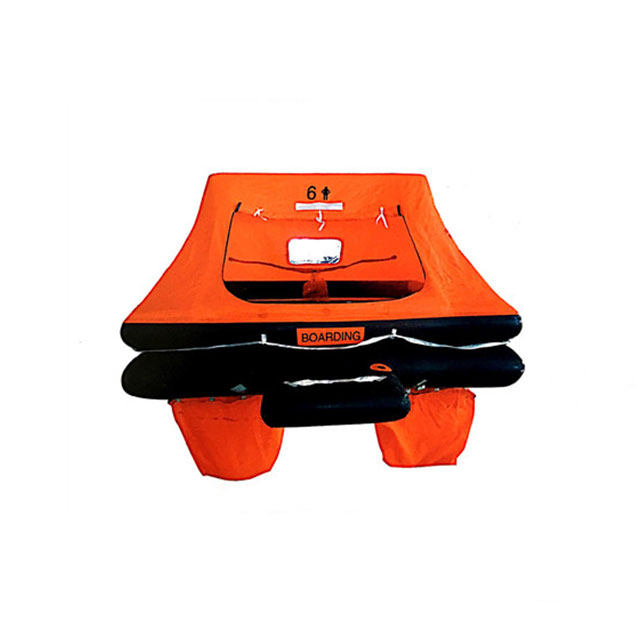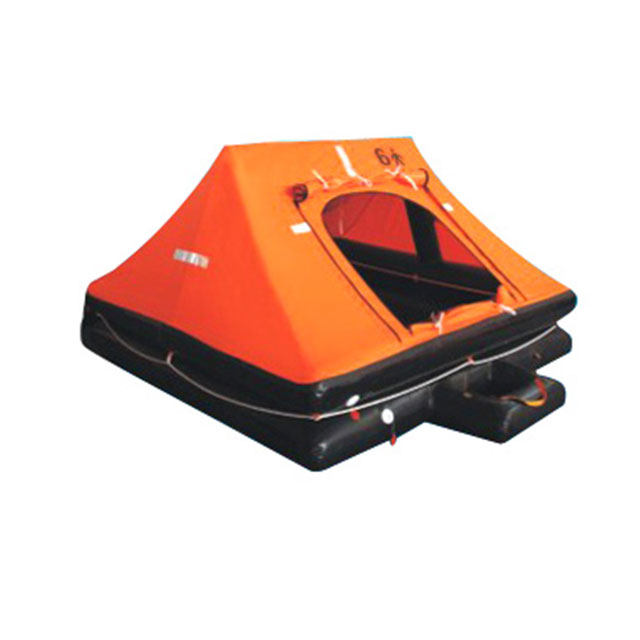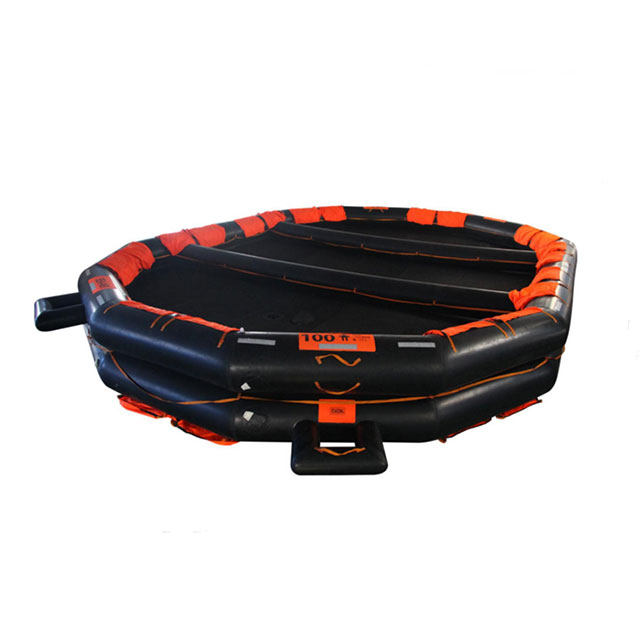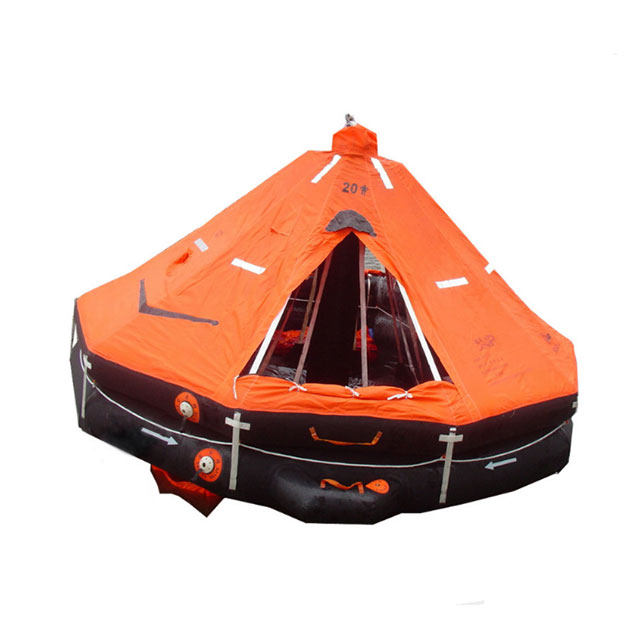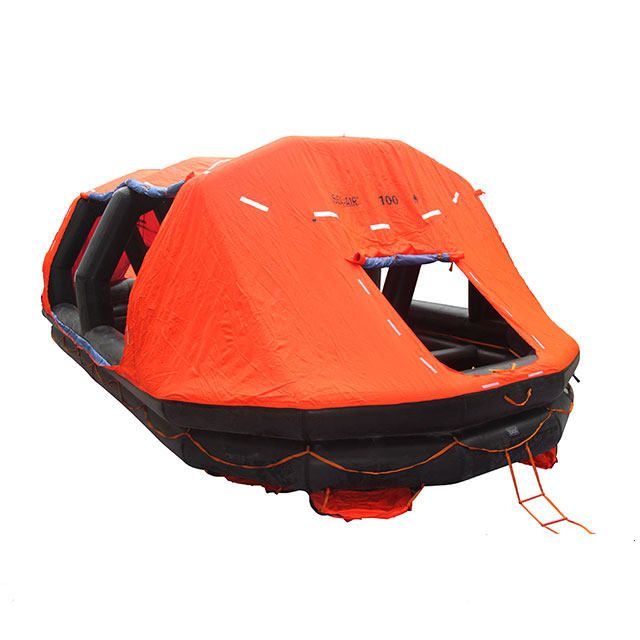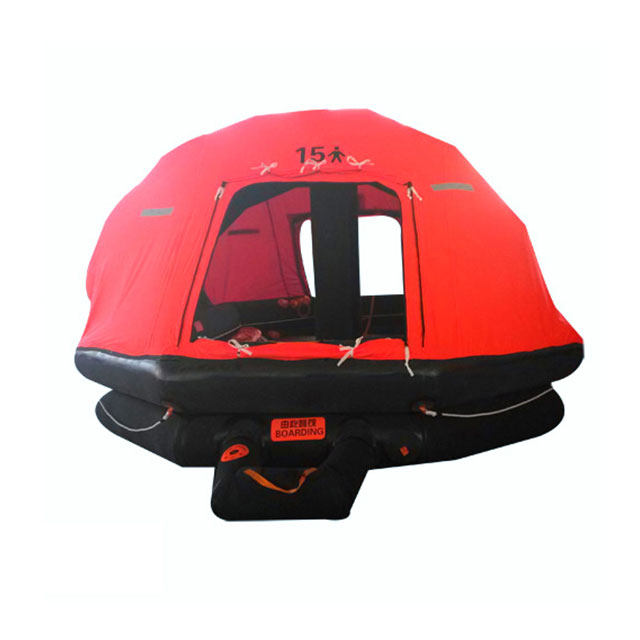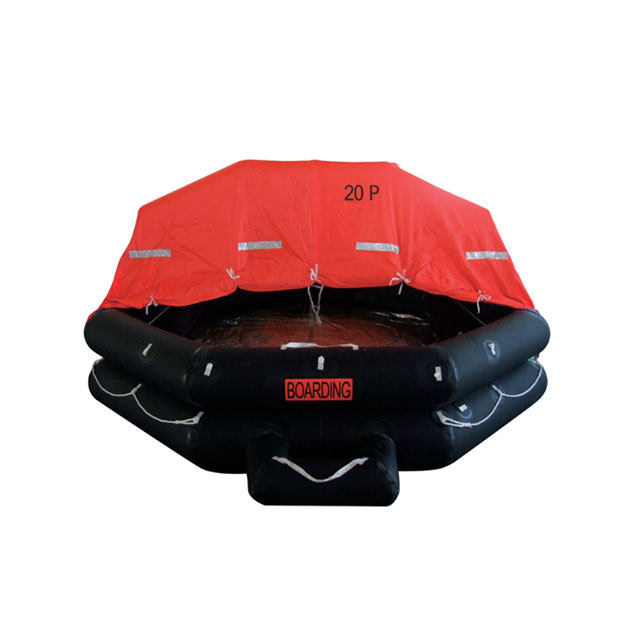Inflatable vs. Rigid Life Rafts: Choosing the Right Type during Marine Emergency
Life rafts are one of the most important safety equipment on any ship when it comes to a maritime emergency. They act as the last line of defense when leaving ship is inevitable. They mostly feature inflatable and rigid life raft designs. They each entail associated strengths, weaknesses, and the ideal utilization based on vessel (including type and operating environment) and regulation.
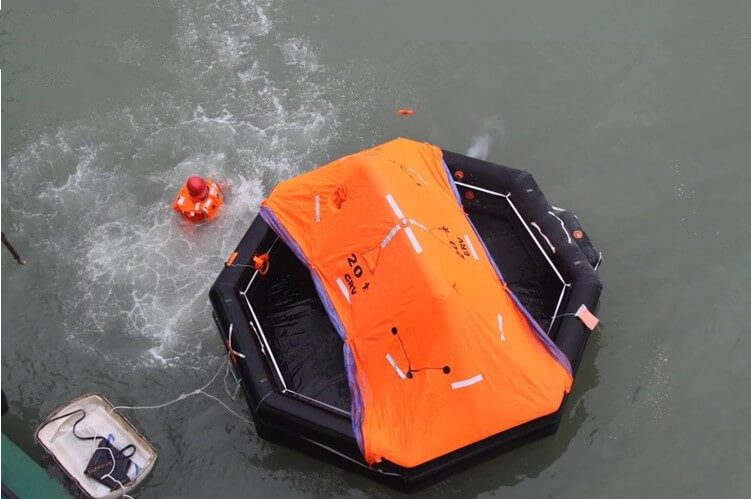
Table of Contents
Understanding Inflatable Life Rafts
An inflatable life raft is an air-filled buoyant floating survival device. When deployed, it quickly inflates using a compressed gas system, typically carbon dioxide or nitrogen, to provide an immediate haven for people at risk. A raft with water onboard goes a long way in maintaining life in extreme weather conditions.
Most inflatable life rafts come with canopies, survival gear and insulation to keep its occupants comfortable and safe. SOLAS or ISO safety standards are typically used to design inflatable life rafts, which serve as a measure of life readiness in virtually every ocean sector.
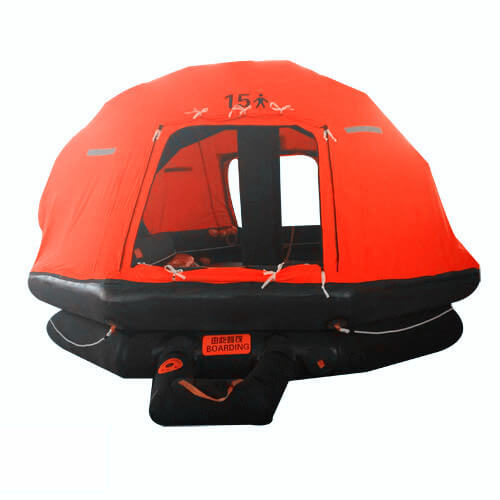
Advantages
- Compact Storage and Lightweight Design: Inflatable life rafts can be folded into small, sealed canisters that take up minimal deck space. Their lightweight construction makes them well-suited for smaller vessels or where storage is poor. l
- Quick and Automatic Release: Newer inflatable rafts come with hydrostatic release units which become automatically triggered on submerged and inflation occurs automatically without any manual involvement. And that rapid action can be life-saving during a sudden emergency.
- Great Capacity and Comfort: A number of these have room for several travellers as well as a rain canopy, insulated floor and ballast pocket with stability, protecting the passenger from the harsh marine atmosphere. l
- Handling & Transport Time Constraints: Inflatable life rafts are easily handled, installed and replaced than their rigid counterparts due to their lightweight and convenience. l
- Lower Cost: Inflatable life rafts typically have cheaper cost structures compared to rigid lifeboats, and can be installed on smaller commercial vessels for entertainment and recreation, rather than larger ones.
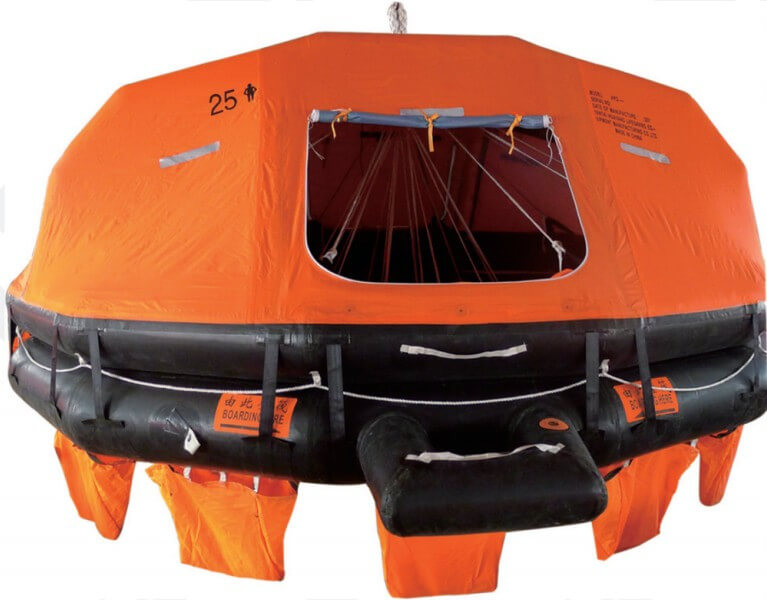
Drawbacks
- Vulnerability to Punctures and Damage: Inflatable rafts may be made from high-strength materials, such as neoprene or polyurethane-coated fabric, but may be subjected to damage from sharp debris, rough handling or extreme weather. l
- Inflation Mechanism: The inflation system has to run well for the raft to deploy. Anything that goes wrong, valve failure, corrosion or expired gas cartridges, can jeopardize safety.
- Frequent Maintenance Needed: Inflatable life rafts need regular inspections, repacking and servicing such as every 1-3 years, generally every 1 to 3 years, depending on the regulation and manufacturer recommendations. l
- Limited Durability through Extreme Conditions: While inflatable rafts are the best choice for the majority of oceanic environments, they find them difficult to withstand the forces of the ocean and/or fire or sharp hits, which makes them less durable than rigid rafts in states of high sea or near high fire hazards. l
- Lower Life Time: UV light, humidity and temperature changes cause the fabric material to deteriorate over time, resulting in a generally shorter longevity than rigid alternatives.
Common Applications
- Recreational and Professional Vessels: Yachts, sailboats and small fishing vessels use inflatable life rafts, as they are easily installed and very small. l
- Commercial Passenger Vessels: Several inflatable rafts are used for maritime evacuation by ferry, cruise ship and small passenger ships, keeping them within international safety criteria.
- Offshore Support and Workboats: Offshore oil and gas platforms are generally supplied with inflatable life rafts in addition to the hard lifeboats that use inflatable floatators. l
- Coastal and Inland Waterway Activities: Boats that function in quieter ocean or along coastlines have an inflatable raft for its portability and ease of use. l
- Military and Navy Rescue Kits: Compact inflatable life rafts are available to be transported in military and navy applications, for which light-weight and fast-moving survival equipment is crucial.
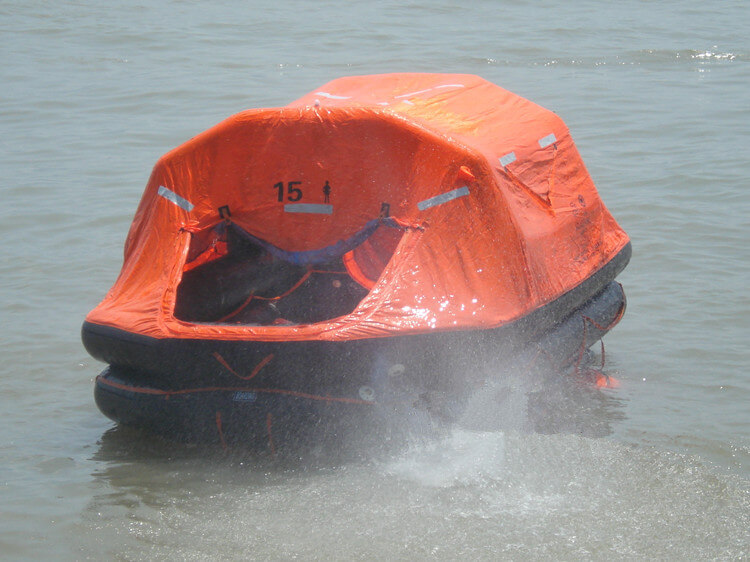
Understanding Rigid Life Rafts
Rigid life rafts are made up of heavy construction materials like fiberglass reinforced plastic (FRP), aluminum and high density polyethylene (HDPE). Unlike air-based rafts, they’re inflation free to deploy and can be immediately boarded. A lot of rigid life rafts are encased in a blanket or partial shroud which creates better cover for rough weather, waves and the elements. These life rafts are also commonly utilized on large commercial vessels, marine platforms, and vessels used at sea in line with SOLAS standards, safety of life at sea, with a number of critical needs.
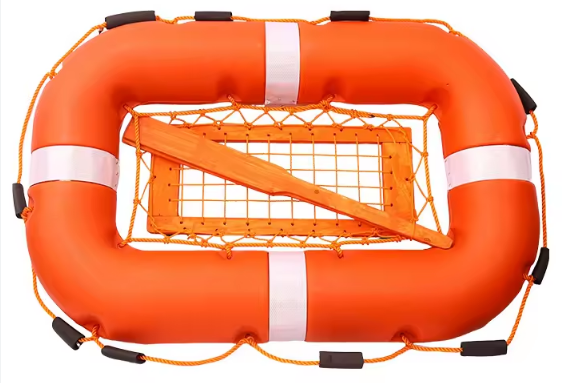
Advantages
- Great Durability and Strength: Inflexible life rafts endure extreme marine conditions such as high waves & collisions, as well as fire & oil and can be injured. Their rigid hulls withstand punctures and physical damage that may lead to the elimination of a good inflatable alternative.
- Inflation-Proof: Rigid rafts do not require inflation and there exists no inflation, any mechanical breakdown is minimized, and are always designed to stay upright and buoyant as a static shape fixed and fixed. They are intended for immediate deployment, which can be vital in spontaneous crises.
- Stability and Seaworthiness: The weight of these structures creates great stability in high tide which makes them safe in extreme weather or during a weather event.
- Longer Service Life: Rigid rafts can still last for decades with proper upkeep. The hard-walled materials are impervious to UV, salt water and temperature variations.
- Improved Protection/Capacity: Many rigid designs also have a canopied shelter, ventilation systems and fold-in seating to protect the occupants from wind, rain and cold. In fact, many of them have a higher capacity than small inflatable models.
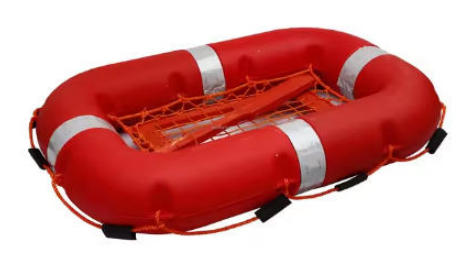
Drawbacks
- Big and Bulky Design: Robust rafts a lot heavier and larger than an inflatable raft, requiring special storage and launching facilities for storage. That can restrict their use on smaller ships. l
- Higher Initial and Maintenance Costs: The materials, construction, and installation costs are higher. Regular hull inspections, corrosion prevention, and mechanical checks also add to long-term maintenance expenses. l
- Complex Launch Mechanisms: Rigid life rafts use davits or mechanical release systems when they enter operations. These systems must be properly maintained to ensure that in emergencies they will run smoothly. l
- Space Requirements: As their dimensions limit flexibility, they are not practical for vessels that have restricted deck space. l
- Limited Portability: Rigid liferafts, owing to their weight and structure, cannot easily be moved, repacked, or transferred from vessel to vessel.
Common Applications
- Large Commercial Vessels: For cargo ships, tankers, and container vessels, lifeboats or rigid life rafts must be used in order to endure harsh oceanic conditions and to serve for extended periods of time. l
- Offshore Oil and Gas Platforms: Rigid life rafts are the traditional type of life raft for offshore installations where high durability, fire resistance, and all-weather performance are a necessity for emergency evacuation. l
- Naval and Military Operations: Rigid rafts of rigid nature are critical for naval ships and coast guard vessels; high turnover and reliability in battle, or even in high-risk operations. l
- Passenger Ships and Cruise Liners: Rigid life rafts are used by large passenger vessels for maximum capacity, weather protection, and SOLAS safety compliance on board and for use in large-size passenger vessels. l
- Polar and Harsh Environment Expeditions: Rigid liferafts are preferred by many marine research and other exploration vessels based in Arctic or Antarctic regions because of their good comfort, stability, and rugged structures against freezing temperatures, ice impact, and turbulent seas.
Comparative Analysis of Inflatable vs. Rigid Life Rafts
| Aspect | Inflatable Life Raft | Rigid Life Raft |
| Construction | Fabric-based, air-filled compartments with CO₂ or gas inflation system | Solid materials like fiberglass, HDPE, or aluminum |
| Deployment | Automatic or manual inflation upon water contact | Always ready; requires manual or mechanical launch |
| Storage | Compact, lightweight, easy to store in small spaces | Bulky and heavy; requires dedicated deck space |
| Durability | Prone to punctures, tears, and inflation failure | Highly resistant to impact, fire, and extreme weather |
| Maintenance | Requires periodic inspection, repacking, and servicing | Requires hull checks and mechanical maintenance |
| Service Life | Shorter, affected by UV, humidity, and temperature | Longer, resistant to environmental degradation |
| Stability in Rough Seas | Good, but may deform under high waves | Excellent; retains shape and self-righting capability |
| Capacity and Comfort | Often includes canopy, insulated floor, ballast; suitable for moderate groups | Can accommodate larger groups; often enclosed for weather protection |
| Cost | Lower initial purchase cost | Higher initial investment |
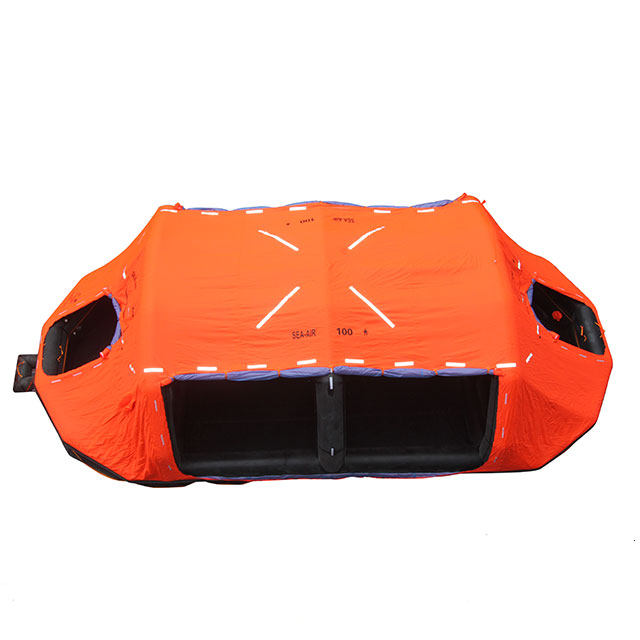
Key Factors to Consider for Choosing Between Inflatable and Rigid Life Rafts
Choosing the right life raft is critical to the safety of the ship and crew during emergencies. There are plenty of alternatives; however, the choice between inflatable and rigid life rafts is always a matter of considering operational, environmental, and regulatory aspects.
1. Vessel Type and Size
The type and size of the vessel play a very important role in determining whether a life raft is suitable. Smaller vessels, such as private yachts, fishing boats, and coastal workboats, normally face their own limitations in storage space. As the design of inflatable life rafts tends to be compact, it caters to these ships well. Conversely, rigid life rafts—which are bulky but offer greater durability and stability, can be built in larger commercial vessels, cruise liners, and offshore platforms of the same type. Thus, determining the size of deck space and vessel dimensions is pivotal for decision making.
2. Operating Environment
It also depends on the environment and areas of operation where life rafts are chosen. Inflatable life rafts thrive in moderate seas and calm waters, and serve most coastal or inland operations well with fast deployment and safe protection. Rigid life rafts, however, are designed to withstand violent weather patterns, high waves, and harsh marine conditions. They are ideal for open ocean, offshore platforms, and in the case of polar exploration, are all well adapted for use. At the time of choosing a life raft type, decision makers must be conscious of wave height, water temperature, and the nature of environmental conditions.
3. Deployment and Readiness
How fast a life raft can be deployed is a key safety concern. Automatic or manual inflation systems in an inflatable life raft enable immediate activation of the device upon contact with water, effectively ensuring readiness ahead of time. All systems depend on maintenance, inspection, and service of the same. Rigid life rafts never fail due to inflation; they are always inflated and buoyant. Often their deployment must be done via mechanical launch systems or davits to maintain a level of reliability in adverse conditions.
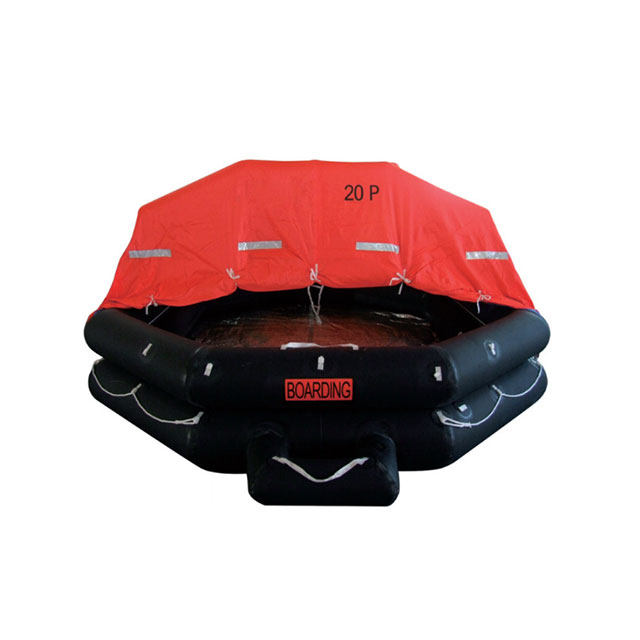
4. Durability and Longevity
It is essential for long-term investment to consider the life raft’s durability and general longevity. Inflatable life rafts should be light and pliable but are susceptible to punctures, UV damage, and general wear and tear which may lead to a decrease in their operational lifespan. Rigid life rafts, constructed from solid materials—whether it be fiberglass or high-density polyethylene—provide years of solid resistant material for years of reliable service, and with virtually no risk of damage.
5. Capacity and Comfort
Life rafts come in a wide range of capacities and onboard comforts. Inflatable models usually are equipped with ballast systems, insulated floors, or canopies so that moderate groups will stand up on their own two feet and not be shaken and support one another too heavily. Rigid life rafts are often larger and are more designed to host people and can have interior safety features including shelters, cabins, and better protection against winds, rain, and cold. It also gives you an idea of how many potential occupants or space they can serve and of the length of time they will use the vessel, which can direct the design to the most suitable.
6. Cost and Maintenance Considerations
Cost will be another deciding factor. The up-front cost of inflatable life rafts, in general, is less costly than other types of life raft, and those systems are easier to carry and replace. But they also need some periodic care, from inspecting and repackaging the product to servicing the inflation. Rigid life rafts are typically more expensive to install than inflatable life rafts and in some cases may need mechanical or hull inspection, but the ruggedness of their durability and the lower susceptibility to ruptured components help mitigate the needs for maintenance. The main challenge is to determine the required trade-off between the high capital investment and long-term reliability of such a product.
7. Regulatory Compliance
Finally, adherence to international safety frameworks like SOLAS (Safety of Life at Sea) and ISO are important. The requirements can be met by inflatable or rigid life rafts, but specific vessel types or routes may dictate the use of one type over the other. Ensuring the life raft will comply with all regulatory requirements is extremely important from the point of standpoint of safety and legality.
Summary
- Smaller vessels or private yachts are in general used with inflatable life rafts, which are easier to hold together and smaller and more compact, if they plan to be.
- For larger commercial ships, offshore rigs and naval vessels, rigid life rafts are preferred, as these are durable, reliable, and able to survive harsh marine environments.
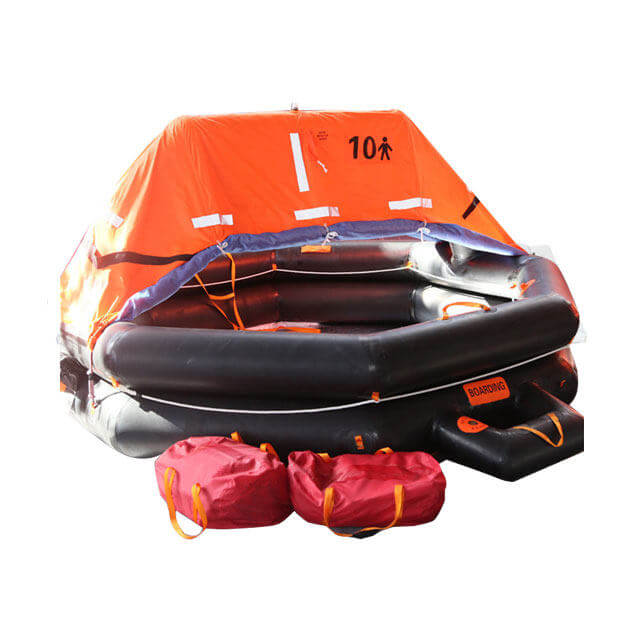
Final Thoughts
Both inflatable and rigid life rafts achieve the end goal of saving life on the water. The right decision is based on the trade-offs between ease of operation and a reasonable layout and operational requirements with concerns pertaining to safety and compliance regulations. Inflatable life rafts excel in portability and rapid deployment, but rigid life rafts offer exceptional durability and stability. For sea operators and building companies, knowing those differences can be an important tool for not just compliance, but the most excellent safety preparation when it really counts.


